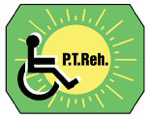


|
Current issue
Archive
Manuscripts accepted
About the journal
Editorial board
Reviewers
Abstracting and indexing
Contact
Instructions for authors
Publication charge
Ethical standards and procedures
Editorial System
Submit your Manuscript
|
2/2019
vol. 33 abstract:
Original paper
Assessment of handgrip strength in young handball players aged 9-16
Justyna Rdzanek
1
,
Aleksandra Michalska
1
,
Michał Wychowański
1
,
Paweł Targosiński
2
Advances in Rehabilitation/Postępy Rehabilitacji (2), 13–19, 2019
Online publish date: 2019/05/29
View
full text
Get citation
ENW EndNote
BIB JabRef, Mendeley
RIS Papers, Reference Manager, RefWorks, Zotero
AMA
APA
Chicago
Harvard
MLA
Vancouver
Introduction
Strength is a primary component of human motor skills and one of the most frequently trained motor abilities. Handball belongs to a group of sports in which handgrip strength plays a key role. The aim of the study was to assess handgrip strength of children and adolescents handball players. This research may prove useful due to the need to monitor the training process. It will enable coaches and therapists to compare the results of children and adolescents with regard to age, gender and body dimensions as well as plan strength training programmes for handball. Material and methods The study was carried out on a group of 99 handball players from the “Handball Club” in Radzymiński Centre of Culture and Sport. The study included both boys and girls aged 9 to 16 who regularly and actively participated in handball training. The work presents basic anthropometric characteristics of the study participants and the results of handgrip strength measurements of both hands with the use of a hydraulic dynamometer. Results Handgrip strength increases with age in both girls and boys. Handgrip strength is greater in boys than in girls, which is connected with greater body mass, body height, relative body weight and phalanx length. Conclusions The given values of handgrip strength will enable coaches and therapists to compare the results of children and adolescents with regard to age, gender and body dimensions in order to monitor strength and plan strength training program in handball. keywords:
handgrip strength, children and adolescents, handball, dynamometric evaluation |
    |